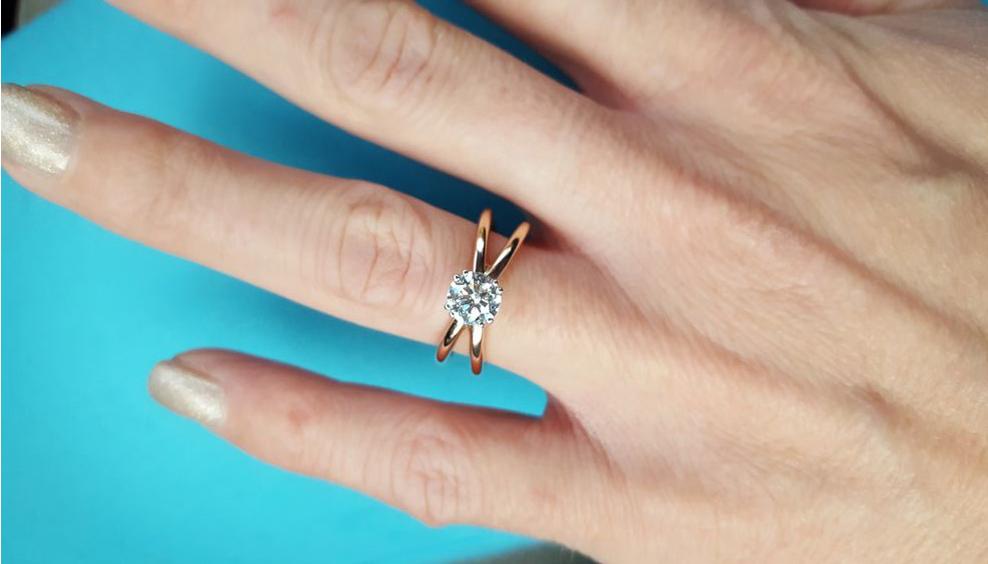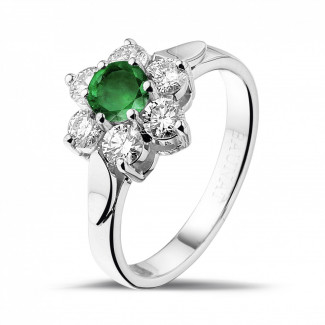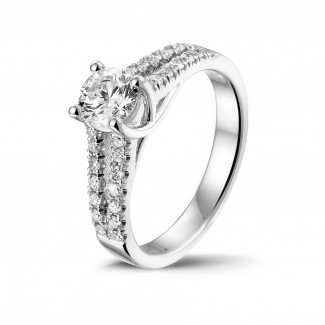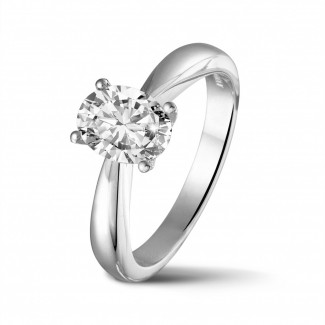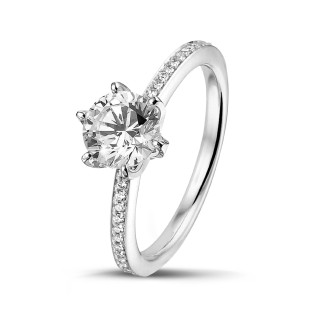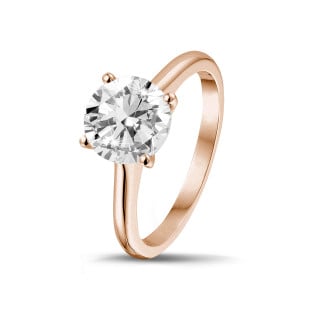Inspirational insights
Blogs in the spotlight
- How do I buy the perfect diamond ring?
- Choosing the perfect wedding ring
- Buying an engagement ring: expert tips & tricks
- Which earrings are the right ones for you?
- How to choose the perfect diamond bracelet?
- How to choose a necklace for ladies?
- Take your time in choosing your watch
- What's the right jewellery for each occasion?
- Why buy diamond jewellery online?
- A guide to building up your jewellery collection
- What types of precious metals are there?
- What types of precious metals are there?
- Jewellery trends and innovations in 2020
- What sorts of diamond setting are there?
Do you know what hallmarks on jewellery refer to?
If you look closely at a piece of jewellery made of real gold or platinum, you will usually find one or more small stamps in a place hidden away from the visible area. For example, inside in a ring made of yellow gold.
While recognisable to the naked eye, these stamps are usually only readable under a magnifying glass. This type of stamp or embossing on precious metal is called a “hallmark”. Only precious metals are hallmarked (i.e. gold, silver and platinum) to prove the fineness of the metal.
Most viewed diamond jewels
.
Hallmarks on Jewellery & Engagement Ring Stamps in Germany
In addition to the fineness, there are often additional manufacturer hallmarks, which allows the manufacturer to be clearly identified. Germany only has self-hallmarking — there is no monitoring body or official inspection body to put hallmarks on German jewellery.
Hallmarking in Europe and the EU
England also has mandatory hallmarking where an examination by a state-approved inspection body is obligatory. The same applies to countries like France and the Netherlands. In some countries, such as Belgium, Italy and Sweden, they use a hybrid system, meaning the inspection isn’t mandatory, but there are state or state-appointed bodies that carry out this kind of hallmarking or award official master stamps on jewellery like gold rings.
The fineness indication is also partly different. In English-speaking countries, it is common to indicate the carat instead of the thousandth, abbreviated with k or ct. 8 carat corresponds to 333, 14 carat to 585, 18 carat to 750 and 24 carat to 999 gold.
In some countries, there are also hallmarks that indicate whether it is an export article intended for sale in another country. Even more complex and extensive jewellery stamps can be found on antique jewellery; jewellery from the 19th century often has five to six hallmarks. There are various databases on the Internet that specialise in antique hallmarks.
Would you like to design your own jewellery? BAUNAT’s tailor-made service helps you create anything from earrings to personalised engagement ring stamps — customised to suit your individual style.

Stephanie Hesters
- BAUNAT Antwerp
- My Linkedin profile - Contact me
 Design collections
Design collections Stackable Rings
Stackable Rings Ruby, sapphire & emerald
Ruby, sapphire & emerald Bestsellers
Bestsellers New arrivals
New arrivals Watches
Watches Cufflinks
Cufflinks Rings for men
Rings for men Diamond
Diamond Sapphire
Sapphire Ruby
Ruby Emerald
Emerald Yellow diamond
Yellow diamond Black diamond
Black diamond
 Diamond rings
Diamond rings Sapphire rings
Sapphire rings Ruby rings
Ruby rings Emerald rings
Emerald rings Yellow diamond rings
Yellow diamond rings Black diamond rings
Black diamond rings
 Stackable rings
Stackable rings Cocktail rings
Cocktail rings Rings for men
Rings for men Bestsellers
Bestsellers Diamond rings
Diamond rings Sapphire rings
Sapphire rings Ruby rings
Ruby rings Emerald rings
Emerald rings Yellow diamond rings
Yellow diamond rings Black diamond rings
Black diamond rings
 Solitaire
Solitaire Dangle
Dangle Diamond earrings
Diamond earrings Sapphire earrings
Sapphire earrings Yellow diamond earrings
Yellow diamond earrings Black diamond earrings
Black diamond earrings
 Solitaire
Solitaire 3 stones
3 stones Halo
Halo Gradient
Gradient Diamond necklaces
Diamond necklaces Sapphire necklaces
Sapphire necklaces Yellow diamond necklaces
Yellow diamond necklaces Black diamond necklaces
Black diamond necklaces
 Gradient
Gradient White gold
White gold Yellow gold
Yellow gold Red gold
Red gold Platinum
Platinum Diamond bracelets
Diamond bracelets Yellow diamond bracelets
Yellow diamond bracelets Black diamond bracelets
Black diamond bracelets
 View watches
View watches View watches
View watches Swiss Made
Swiss Made Swiss Collection limited edition
Swiss Collection limited edition Manufacturing process
Manufacturing process Manual or Automatic watch
Manual or Automatic watch Sapphire or mineral glass
Sapphire or mineral glass
 Rings
Rings Necklaces
Necklaces Bracelets
Bracelets Sapphire
Sapphire
 Engagement rings
Engagement rings Earrings
Earrings Necklaces
Necklaces Bracelets
Bracelets
